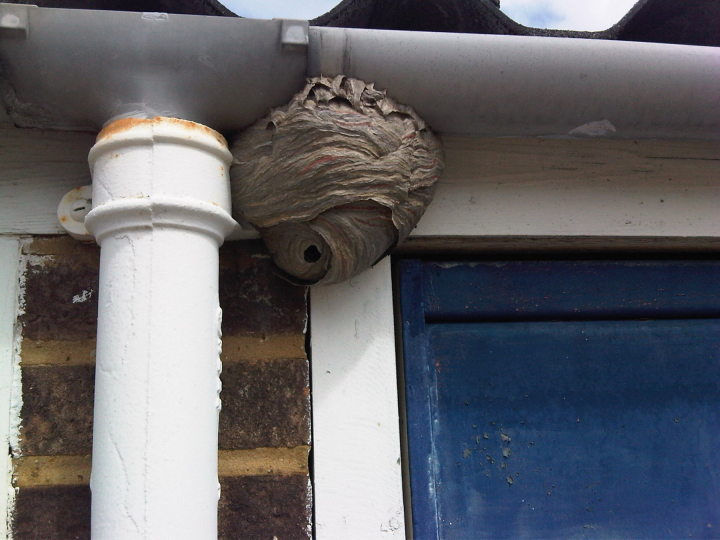Treatment of wasps nests:
This is a job for a trained professional only. Under no circumstances should any person other than a pest controller attempt to treat or remove a wasp’s nest. You would normally encounter wasps during the warmer months of the year; typically this would be from approximately May through to September although this can vary greatly with variations in temperature that we have experienced in recent years.
I found a wasp in my kitchen on Boxing Day. The easiest way to identify whether you have a wasps nest or if wasps are just feeding from plants in your garden would be to watch them closely, see where they are flying to and from. If you can identify a definite pattern of wasps flying in and out of a particular hole on or around your house e.g. an air brick, then the chances are that you will have a wasps nest. Wasps will visit your garden to feed from the sap on certain flower heads and from ivy plants.
This does not necessarily mean that you have a wasp’s nest; this may only mean that they are using your garden as a food source. Wasps will also attack and eat other small insects in your garden. If the nest can be identified, depending upon the location, they can be treated using either insecticidal spray or dust. It is not normal practice to remove a wasp’s nest during the treatment. If they are emerging from an airbrick for example, then the nest is not accessible, if the nest is in a loft, again, it depends upon the location, if they are easily accessed then they can be treated and the nest broken up.
Baiting:
There are a number of different types of wasp pots available today. The most effective type of pot is one which does not allow the wasp to escape from the pot to go back to the nest to inform the other wasps about the food source they have found. This means that the cycle of wasps visiting your garden can be broken.
There are a number of pots available that allow wasp to enter and exit without ill effect, these will only exacerbate your problem as these wasps will inform other wasps of the food source and then they will visit your garden to look for food. The principle of the wasp pot is that the wasp enters the pot looking for food, has a feed and then drowns in the wasp bait inside the pot.
As I mentioned above there is one pot available on the market today that will not allow wasps to escape once inside. We can offer further information on this product by contacting our office.


